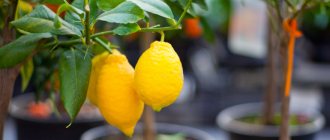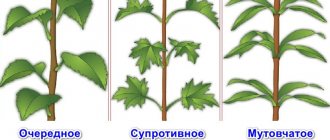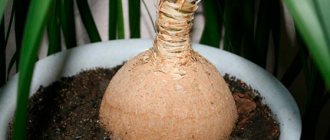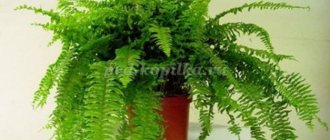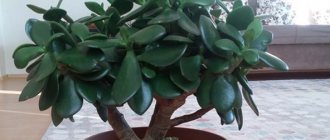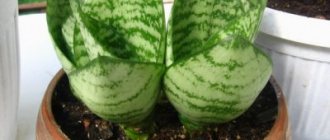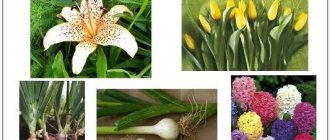Swamp and Siberian irises
These two types of irises cope well with moist and even swampy soil, so they can be planted on the banks of ponds and other bodies of water.
They love fertile and humus soils, partially shaded, but also sunny places. Swamp irises bloom from May to July with yellow flowers, while Siberian irises most often have a purple-blue color (there are also white and purple varieties). Both species are perennial and frost-hardy.
What have we learned?
Moisture-loving and semi-aquatic plants inhabit swampy areas, damp forests, and the banks of reservoirs. Examples of plants given in the article can be described in a report at a lesson on the surrounding world in grade 2: rice, swamp iris, sage, geranium, hydrangea.
Previous
The world around us Signs of animals - a brief description for children (2nd grade, the world around us)
Next
The world around us Feldspar - information about the composition of the mineral, characteristics and description briefly for communication (class 2, the world around us)
Buzulnik
Buzulnik will delight you with beautiful leaves (purple on the underside) and decorative yellow-orange flowers. Blooms in summer and until late autumn. Loves places in partial shade and even shade, and also needs constantly moist soil. It can even grow on the banks of water bodies.
This magnificent plant grows up to 1-1.5m in height and the leaves form large, spreading clumps, so it needs to be given plenty of space when planting. Overwinters without problems.
Chrysanthemums
Plants that can grow in moist soil also include chrysanthemums. It is an attractive perennial with a huge variety of varieties and flowers ranging from dark red to white.
Grows well in partial shade and light, provided the soil is constantly moist. However, it should be remembered that although the soil for chrysanthemums should be moist, it should also be fertile and permeable (water should not stand near the roots).
Domestic green giants
Sometimes you want to see a tub with a large plant in an empty corner. Large moisture-loving indoor plants will survive well in such poor lighting. They will decorate the room and absorb carbon monoxide if they are provided with the usual conditions - moist soil.
The most popular monster plants:
Monstera is a real giant among indoor plants. This is a South American vine that grows up to five meters. Green monsters often live in libraries, reception areas and foyers of various institutions. This is a plant with large dark green leaves that look like they have had large holes cut out of them.
Monstera needs plenty of moisture in summer; in winter it is satisfied with moderate watering. Leaves should be regularly wiped from dust, which serves as a good reason to take a break and communicate with nature.
Palm trees grow in the tropics, in both dry and very humid climates. They grow if watering is combined with spraying, because the leaves also absorb water. The ideal conditions for palm trees in northern latitudes are a greenhouse.
In your own winter garden with one palm tree in a pot or tub, you need to create a humid atmosphere. The plant is sprayed and trays with water are placed next to it. Place a damp cloth over hot batteries.
The most moisture-loving types of palm trees:
- Bamboo palm, or Hamedorea;
- Umbrella palm, or licuala;
- Fan palm or Livistona.
All of these palms come from tropical rainforests and have very beautifully shaped leaves, as reflected in their names. Plants require the soil to be constantly moist. If you forget about watering, you will be reminded by yellowed leaves. Excessive watering can cause roots to rot, but palm trees usually do not suffer from this.
Kaluzhnitsa
Marigold is a plant that not only can grow in moist soil, but also needs it, so the banks of reservoirs are considered an excellent place.
It blooms with yellow flowers from May to June.
The leaves are dark green, form not very large clusters and grow to about 30-40 cm in height. Marigold loves sunny or slightly shaded places and is resistant to frost and pests. All parts of the plant are poisonous!
Tips for caring for plants
In unnatural conditions for them, moisture-loving plants often wither and die. To prevent this from happening in an artificial environment, you need to follow simple recommendations for planting and caring for them:
- Before planting the plant, the soil must be fertilized with nutrient substrates.
- It is imperative to maintain constant soil moisture.
- Good places to create flower beds with moisture-resistant plants are the most humid zones, for example, the border areas of a site with a lake or river.
- Planting in areas where humidity levels are high should not occur during the autumn months, otherwise the plant will freeze.
Hard work and proper care of moisture-loving plants will allow you to create a small piece of paradise in any garden plot.
Sources
- https://FB.ru/post/gardening/2021/8/24/325042
- https://ingesystems.ru/kakoe-derevo-posadit-vozle-vygrebnoj-yamy-dlya-osusheniya.html
- https://www.botanichka.ru/article/rasteniya-dlya-syiryih-i-bolotistyih-uchastkov/
- https://kip-mtr.ru/lanchaftniy-dizain_25-rasteniy-dla-osuchenia/
- https://sotka.guru/kustarniki-i-travy/vlagolyubivye-rasteniya-primery-kustarnikov-i-pravila-uhoda.html
- https://dacha.help/derevya-i-kustarniki/vlagolyubivye-rasteniya-dlya-dachnogo-uchastka
- https://design-homes.ru/landshaft/rasteniya-dlya-vlazhnoj-pochvy
- https://standartmebel.com/sad-v-nizine.html
- https://sadr-russia.ru/kusty-i-derevya/dlya-osusheniya-uchastka-2.html
- https://superarch.ru/usadba/posadki/vlagolyubivyie-derevya-i-kustarniki-dlya-dachi
Loosestrife
Merlin grows wild and is quite common in Russia, but it can also be grown as an ornamental plant.
It has characteristic long inflorescences with pink or carmine flowers that bloom all summer. Can grow in sun or partial shade and does especially well around bodies of water.
Frost-resistant and undemanding. It is also worth saying that loosestrife is not only a honey plant, but also a medicinal plant. And in addition to wild species, decorative varieties with more spectacular inflorescences have also been bred.
Volzhanka dioecious
Another spectacular plant, the leaves and stems of which form a compact bush.
In June and July, the tips of the stems are crowned with tall flower shoots with paniculate inflorescences of white or cream flowers. During this period, the plant can reach a height of more than 2 m.
Volzhanka dioecious needs fertile, humus and constantly moist soil. Grows best in partial shade.
What are moisture-loving plants?
Moisture-loving plants are valerian, meadowsweet or meadowsweet, woodlice or chickweed, various swimworts, geraniums, hydrangeas, oxalis and anemones. This includes trees (various willows, alders) and spore-bearing plants (mosses, mosses, ferns, horsetails).
Rice. 1. Siberian swimsuit.
Semi-aquatic plants: loosestrife, marigold, marsh iris, sedge, rice, cyperus (syt).
Let's name the signs of moisture-loving plants.
- Need for a humid environment.
- Forest herbaceous species have thin, delicate leaves. Some release moisture in droplets, similar to dew. The leaves of meadow species are coarser. Marsh and semi-aquatic plants have hard, narrow leaves.
- Well-developed root system with far-growing rhizomes.
Rice is a semi-aquatic cereal. For its cultivation, special flooded fields are arranged, fenced with earthen ridges - rice paddies. The checks are filled with water and the seedlings are planted. When the plants get stronger, the water is drained.
Rice. 2. Planting rice seedlings.
Astilbe
A beautiful and colorful perennial that blooms for a long time and has a fairly compact size. The plant is grown in many gardens and not necessarily in wetlands.
However, in summer it requires regular and intensive watering, because during drought, growth may slow down and flowering may stop.
It is best to plant astilbe in moist and semi-shaded places. The soil, although moist, must be permeable, fertile and humus, which will give more abundant and vibrant flowering.
Plum
For those who want to drain the area and get a wonderful harvest of ripe berries as a bonus, we can recommend planting plums in their dacha.
Moreover, when buying a seedling in a nursery or on the market, you need to pay attention to the rootstock. After all, it is the roots of the plant that must penetrate deep into the soil and take excess water from it.
Experts advise purchasing recyclables. This subspecies of plum will drain the area as quickly and without problems as possible.
You need to plant a tree using a certain technology. Drainage must be placed in the hole. Sufficiently large stones that need to be mixed with soil are suitable. The depth of the planting hole must be at least 80 cm.
Spiraea
Meadowsweet is another plant to consider if you have waterlogged soil in your garden. In Russia it grows wild, so you will not have problems adapting to the climate.
It is a disease-resistant perennial that blooms all summer with white and cream paniculate inflorescences consisting of many tiny, pleasantly scented flowers.
Meadowsweet grows up to 2m tall and grows best in moist, moist soil in partial shade or full sun. It is worth knowing that it is also a medicinal plant.
Unpretentious varieties of winter-hardy shrubs
Derain
Shrub with white flowers and bright foliage. In autumn, blue drupes appear on it. In winter it is no less picturesque. Derain is unpretentious in care, grows quickly, and is frost-resistant.
Main characteristics:
- Blooms in May-June
- Not picky about soil and lighting
- Grows quickly and is easy to shape
- Retains decorative properties in the winter season
Deciduous barberry
High winter hardiness. Barberries are suitable for fertile soil in an open place or partial shade. Suitable for shaping the crown with frequent cutting.
Features of barberry:
- The height, depending on the variety, can be from 60 cm to 2 m.
- The shrub is very undemanding. Grows in shade, sun and almost any soil. Tolerates winter without shelter.
- The colors of the leaves can be very diverse: red, green, yellow, purple.
- Barberry is suitable for forming hedges, a background for flower beds and beds, and goes well with a green lawn.
If you want to add some color to your flowerbed, plant barberry.
Snowberry
This shrub is found with white or pink fruits. White snowberries are more resistant to cold winters. This shrub grows quickly and easily gets along in any conditions. The snowberry bears many large snow-white fruits in the fall, making this shrub stand out in the landscape. Easily formed by pruning; thinning is necessary in the spring.
Features of the snowberry:
- It can reach 2.5 meters in width and up to 1.5 meters in height.
- Not picky about soil, prefers sunny places.
- Drought-resistant, can do without fertilizing. But more careful care and fertilization will result in rapid growth and a magnificent decorative appearance.
- Resistant to pests and diseases.
- In autumn, when the plant is covered with white fruits, it will look picturesque against the background of conifers.
- Ideal for forming tall hedges, in the summer it is necessary to maintain the shape with regular trimming.
Chaenomeles (Japanese quince)
This is a fairly common fruiting shrub with a height of 50 to 120 cm and grows quickly. It has small, rounded leaves, orange-red flowers with a diameter of 3-5 cm. The fruits are yellow and fragrant, appearing in autumn. Japanese quince is resistant to low temperatures; in severe frosts the branches may freeze slightly.
Peculiarities:
- Grows on any soil in lighted areas and in the shade.
- The bushes are periodically thinned out; they do not require constant pruning.
- It bears fruit annually from 3 to 4 years.
Lilac
A very common deciduous early flowering shrub. It has lush inflorescences and a bright aroma. There are bush and single-stem varieties.
Easily amenable to crown formation. Tolerates low temperatures well.
Blooms in 3-4 years. Hybrid varieties with incredibly beautiful flowers will become a spring decoration for your garden.
It is distinguished by its longevity; one plant can bloom for up to a hundred years.
Buddleya
In another way, this plant is also called “summer lilac.” It has many types, differing in the size of the flowers and their shades.
The culture is not picky about soil composition and grows quickly. This often becomes a negative characteristic of the plant.
Prefers sunny places with loose soil. Easily tolerates drought and other adverse events.
Buddleia is a winter-hardy shrub. Some varieties are also suitable for harsh climates.
It can quickly take over territories with its easy seed reproduction. To avoid this, immediately after flowering the branches are cut off, not allowing the seeds to ripen.
Common hazel
A frequent representative of shrubs in the gardens of summer residents. Valued for its thick crown, which becomes even more decorative with regular pruning.
Prefers loose, neutral soil. Feels better in illuminated areas. It begins to bear fruit at 7-8 years.
Skumpia
It looks picturesque during flowering and pleases the eye with fluffy inflorescences. Refers to heat-loving plants. But there are varieties bred for the middle zone. Mackerel with green leaves tolerates low temperatures better.
It takes root well in loose, slightly alkaline soil, without stagnant moisture. Prefers sunny or partial shade places, protected from strong drafts.
Basilisk
Various types of cornflower love moist soil, so they can be planted near bodies of water, preferably in partial shade.
The plant has delicate feathery flowers in pink, purple, as well as white and yellow. On sale you can find several species that differ in color, shape and size of leaves, although they are all quite large plants (from 1 to 2 m in height).
Landscape design elements - streams and ponds
We effectively get rid of excess water on the site by installing artificial ponds and streams. Similar elements of landscape design can be organized in areas located at a slight slope.
It is better to arrange water sources in dark places to avoid algal blooms. The bottom of the artificial pond is lined with stone or geotextile.
To enhance the effect, moisture-loving vegetation – shrubs, plants, grass – can be planted next to the artificial pond.
Such landscape forms are structurally reminiscent of the French drainage system, since they are developed according to the same principle.
Mint
Mint is also decorative, healthy and all its types like moist soils. In nature, mint grows near bodies of water, so in the garden it is best to plant it in partial shade or shade. Mint can be used as part of medicinal and ornamental plantings.
Thus, longleaf mint has characteristic silvery leaves and elongated purple inflorescences, and grows up to 1 m in height.
Floral Heritage
Moisture-loving houseplants can do without watering for a couple of weeks. They are accustomed to storing water in fleshy stems and leaves. If watering suddenly stops for a while, they act as in nature. The leaves shrink and fall off, giving up moisture to the stem and roots. When a loving gardener spares no water, plants grow quickly and abundantly.
The most common and familiar:
- Tradescantia.
- Ferns.
- Cyperus.
- Begonia.
- Unique moisture-loving chlorophytum
Beauty Tradescantia
The great-grandmothers did not know book words, so they gave the plant the apt name “Grandma’s Gossip.” Long stems with succulent leaves reach one and a half meters and hang beautifully from flower pots in the darkest corners. In the interior of the 60s, wall and floor metal stands for pots, painted to resemble a birch trunk, were popular. The stems of Tradescantia really resemble thin birch branches.
12. Common yarrow
Common yarrow grows in nature in damp places, but can also be used as an ornamental plant; even several varieties have been bred.
It grows up to 30 cm in height and forms dense inflorescences of small flowers. It can be grown in a flowerbed or on a balcony in a container.
Unlike other species, it requires moist soil and sunny or partial shade. It blooms from June to August, the flowers can be used for cutting.
You may also find the following materials useful:
- How to choose good seedlings of ornamental shrubs: tips and tricks
- Which garden shrubs are best planted outside the site?
- Getting rid of licorice in your summer cottage: effective methods and life hacks
- Garden ivy: planting and care in open ground, reproduction, diseases and pests
- Pots and baskets with flowers in the garden - a stylish decor option for a summer cottage
Variety of moisture-loving flowers, shrubs, trees
Birch is fluffy.
If you have a personal plot, the ideal water source for it is downy birch. A couple or three trees planted in the lower part of the site or the water drainage point on the site and the problem with flooding from spring to autumn will be solved. Despite the fact that the birch root system is very developed, the roots do not penetrate deep into the soil, so the trees can be subject to wind blows. Downy birch is the most cold-resistant of the birches. Please note that this is the second time in the article that I have mentioned local drainage; if general drainage cannot be done, or it is not possible to drain groundwater outside the site, the site must still be planned with a slight slope and local drainage must be installed at the lowest point. And in the place planned for planting plants that will help you drain the soil, build a drainage well; its optimal dimensions are 3x3 meters. It would be even better if there were several such wells, they would be connected by a system of pipes and a tree would be planted near each one.
Pits for planting trees to drain the site also need to be prepared somewhat differently than for regular planting. As I already mentioned, the root system of trees for draining the site is very well developed and lies at a depth of 60-80 cm. In this regard, the planting pit for plants used in draining the site should be meter by meter in size and also at least 0.8 meters deep . The lower part of the planting hole should be filled 50 centimeters with a large stone, the simplest and cheapest option is plaster mixed with soil; the stone (not brick) will support the roots and create additional drainage. This method of planting trees used to drain the site should be followed for any plants.
Red maple.
To drain and at the same time decorate a personal plot, alder, larch, ash and Tatar maple are also used in landscape design. A separate page is dedicated to each of these plants on the site; you can go to it by clicking on the corresponding highlighted word. I will dwell in more detail only on the ash tree at the end of the article; I have a separate story connected with it with landscape design.
Irga
It is not for nothing that this unpretentious plant is considered unique. Irga can be planted somewhere in a corner of the garden - and it will feel great.
The shrub's ability to absorb large amounts of water from the soil has made it the most desirable crop for owners of damp summer cottages.
The roots of the serviceberry reach 2 m in depth and cover 2.5 m in circumference. By the way, this helps it survive: tolerate shading, gas pollution, drought and grow quickly.
In the spring, the serviceberry blooms beautifully, in the fall it pleases with bright foliage, and in the summer with sweet berries. In addition, it is durable - some specimens grow in front gardens for up to 60 years.
Popular varieties of serviceberry:
- Irga Krasnoyarskaya is a fruit and ornamental plant, a shrub of the Rosaceae family, and an excellent honey plant. The stems of the serviceberry are raised, long - up to 3.5 meters, red-gray with large green leaves. The fruit is a berry 1 cm in diameter, with purple skin and juicy, fragrant, aromatic pulp.
- Irga Brilliant is a late-ripening, high-yielding variety. The berries have a special taste; they are completely sweet, without acid. This is a great summer treat for children and adults.
- Irga Northline is a representative of fast-growing, winter-hardy and productive varieties. The useful plant resists diseases. It begins to bear fruit 3-4 years after planting. It blooms on warm May days, fruit ripening begins in July-August. The bushes are tall, can reach 4 m in height. The crown is round in shape and can reach 6 m in diameter.
- Irga Aroma Fruit - The sweet, raisin taste of the berries is pleasant and harmonious, and their color changes as they ripen, smoothly transitioning from bright pink to dark purple.
Plum
For those who want to drain the area and get a wonderful harvest of ripe berries as a bonus, we can recommend planting plums in their dacha.
Moreover, when buying a seedling in a nursery or on the market, you need to pay attention to the rootstock. After all, it is the roots of the plant that must penetrate deep into the soil and take excess water from it.
Experts advise purchasing recyclables. This subspecies of plum will drain the area as quickly and without problems as possible.
You need to plant a tree using a certain technology. Drainage must be placed in the hole. Sufficiently large stones that need to be mixed with soil are suitable. The depth of the planting hole must be at least 80 cm.
Popular plum varieties:
- Honey plum does not have a thick crown. The variety is self-sterile, so to increase productivity it is necessary to plant plum trees of other varieties nearby (the Hungarian variety is a good pollinator). The fruits ripen early and have a regular round shape. The aromatic pulp has a delicious taste, the skin is yellow with a waxy coating, at the same time tender and durable.
- Blue Free Plum - Light purple with a bluish bloom, Blue Free plums have an amazing taste and bright aroma. The tree has a spreading, wide crown, which is not particularly dense. The ripened harvest is clearly visible between the leaves, and plums are easy to pick.
- Delicacy plum is a tasty and large fruit that ripens in late summer or early autumn. The fruit has a round shape, the skin is purple with a delicate waxy coating. The yellow flesh has a sweet taste and does not stick to the small seed.
- Ruby is a low compact tree reaching a height of up to 2 m. The crown is narrow, the crop ripens on short fruit branches growing directly from the main trunk.
- Blue Sweet is a variety of fruit tree with a small trunk and a pyramidal crown. It is characterized by weak formation of lateral branches and high yield. The fruits are blue, with a characteristic waxy coating, the flesh is juicy and yellow. The variety is cold-resistant - it overwinters in the middle zone without additional shelter. Self-sterile, Blue Free plum variety is suitable for cross-pollination.
Mock orange (garden jasmine)
This perennial plant, sometimes called jasmine, needs sufficient moisture. This is very useful for a gardener - in addition to draining the area, mock orange will fit perfectly into any landscape, enriching it with new colors.
Garden jasmine blooms charmingly - in summer its inflorescences of white or cream shades decorate hedges and form an excellent composition with annuals and ornamental shrubs.
It is better to place the mock orange in a sunny area. The soil for this crop must be fertile. The seating area is prepared 2 weeks in advance. It is advisable to lay crushed stone at the bottom of the hole, and above it - leaf soil with humus.
Popular varieties of garden jasmine:
- Mock orange (Jasmine) Snowfall is a luxurious shrub that exudes an intoxicating sweet aroma during flowering. In June, the tall bush puts on an alabaster headdress of thousands of flowers, which cover the plant like an openwork snow blanket.
- Mock orange (jasmine) Mont Blanc is a stylish shrub from the Hydrangeaceae family. With sufficient lighting, it grows in width and does not exceed the mark of two meters in height. During flowering, which occurs in mid-summer, the variety is fabulously good!
- Mock orange (jasmine) Yellow Hill is more charming than the classic specimens of its species due to the abundance of double flowers. Each of the opened buds captivates with its pristine whiteness, the refinement of the lines of the petals and a wonderful, well-recognized aroma.
Catchment (aquilegia)
The name of the flower speaks for itself: aquilegia consumes a fair amount of moisture every day, thereby drying out the soil. The catchment can be placed in a sunny or shaded place.
It is better to prepare seedlings at home, and then plant them in a flowerbed or lawn at the beginning of summer. In the first year the bushes will not bloom, but then the plants will feel at ease and begin to actively grow.
If you plant aquilegia under fruit trees, which also consume a lot of water, you will get a whole complex for draining the garden plot. And the flowering of the catchment in the lace shade will be longer and more abundant.
Popular varieties of aquilegia:
- Aquilegia Altai Giant (catchment) is an unusual perennial herbaceous plant from the Ranunculaceae family. It is characterized by a wide variety of colors of rather large delicate flowers and their very unusual shape.
- Aquilegia Tower dark blue is an ornamental perennial shrub, a representative of the Ranunculaceae family. Grows up to 70 cm. The bush is distinguished by its spreading habit and bluish-green trifoliate leaves. The flowers are 4-5 cm in diameter, double, deep blue.
- Aquilegia Tower pink is a luxurious, densely double perennial, one of the most beautiful in its variety group. Tall branched bushes with strong peduncles reach a height of 70 cm. The inflorescences, consisting of several dense tiers, have an excellent shape and short spurs, which indicates the European origin of the cultivar. The diameter of the flower is 5 centimeters.
- Aquilegia Winky Double Purple - the plant is called the elf flower for the beautiful shape and color of the flowers with a diameter of 4-6 cm. The fabulous buds of this variety are distinguished by the lilac-purple color of the petals with a white tint at the edges. A large number of flowers gradually bloom on one peduncle about 80 cm high.
- Aquilegia Blue Star is an elegant perennial shrub with lacy foliage and large blue flowers. The five-pointed flower reaches 5 cm in diameter. The bush grows in one place for 3-5 years and combines well with other plants.
Weeping willow
Fairy tales and poems were often written about this plant in Rus'. Various types of willows love moist areas and are excellent for garden plots. Garden willow, which can be found not only in gardens, but also in city squares - Tristis, has picturesque hanging shoots, but quickly grows to impressive sizes and is therefore appropriate only in spacious gardens.
In a small dacha it is better to grow low varieties, for example, purple willow Nana or Pendula.
According to gardeners, weeping willow is considered an effective plant that helps drain the soil. It is easy to fit into any landscape project.
Red maple
This unpretentious tree has been used in landscape design for a long time. Many varieties of maple varieties allow you to choose the most suitable one for your site. Red maple is good for waterlogged soils - up to 15 m high, with a spreading, picturesque crown. It blooms in March-April, has reddish leaves that turn green in summer.
Prefers sun, but is considered shade-tolerant. It is not afraid of wind, smoke and gases, so it is grown even in cities. It does not like alkalization, but it grows well in moist and loamy soils, absorbing excess water. Beautiful both in a group and alone.
Gray alder
Gray alder Pendula tolerates marshy soil well. Grows up to 6 meters in both height and width. Perfectly suited for spacious areas with a pond: branches falling towards the water look very picturesque.
But more compact varieties are suitable for growing in small front gardens. These include bush-shaped alder Aurea with a conical crown and Laciniata with openwork leaves.
Chokeberry and viburnum
These plants are not only picturesque, but also help to slightly reduce the water level in flooded garden areas. They have an intense metabolism and fairly wide leaves, and their dense root system is close to the surface of the earth.
Chokeberry or chokeberry is used for planting hedges and strengthening ravines. Prefers moist loamy soils and plenty of sun. Produces tart, juicy berries. Another shrub that loves water is viburnum. It is shade-tolerant and produces healthy fruits in the form of red berries, from which compotes and jams are made.
Metasequoia is the oldest
Most conifers do not tolerate flooded areas well, but there is an unusual tree that grows well in damp places - the relict metasequoia. It is successfully grown in open ground all the way to St. Petersburg, where it tolerates long-term frosts. In its native China, metasequoia grows around flooded rice fields. It easily tolerates high groundwater levels.
Loves light and does not tolerate drafts. Suitable for creating oriental style gardens and for framing water features.
The most effective solution for draining garden soil is drainage, and plants only serve as a supplement. After planting them, the water balance will change over time, and the process of selecting plantings will become more flexible - you can plant other bushes and trees you like.
Swamp Rose
Swamp rose is an erect, spreading bush up to two meters high. It constantly produces young shoots and grows quickly. This shrub is also known as Pennsylvania rose. It comes from North America. It lives on the shores of reservoirs and in wetlands, as well as in ravines. Prefers partial shade and bright sunlight. The purple-reddish shoots have many thorns, and the edges of the pubescent dark foliage have teeth. The appearance of a picturesque openwork crown is complemented by inflorescences of several small flowers. The bush emits a pleasant aroma. During the summer, the color changes from pink to bright orange. Flowering occurs in July-August.
Swamp rose requires constant care, including timely removal of young shoots and annual pruning of old branches. This crop is suitable for creating a spectacular accent. It stands out brightly against the background of decorative foliage plants.
Himalayan honeysuckle
Himalayan honeysuckle is one of the moisture-loving shrubs that do not require special care and are very easy to grow. This plant looks very impressive near a pond, when its arched green branches covered with purple flowers bend over the surface of the water. The best background for growing Himalayan honeysuckle is white turf.
Cherry plum
The group of fruit plants that evaporate large amounts of moisture also includes cherry plum. This is not surprising, because the culture is a relative of the plum. The amount of moisture absorbed depends on the size of the tree and can reach up to 200 liters per day if we are talking about 10-meter specimens. More often, low-growing varieties are grown in gardens; their ability to transpirate is more modest.
Cherry plum is highly productive. A bush or tree begins to bear fruit the very next year after planting. At the age of ten, one specimen can produce up to 300 kg of fruit. The taste of cherry plum fruits is inferior to plums, but they have a rich composition. They contain biologically active substances, large amounts of vitamins A and C, potassium, and iron.
Norway maple
Norway maple is considered a fairly powerful pump tree. It sucks up to 250 liters of water from the soil per day. A deciduous tree looks especially impressive in autumn, when its foliage combines red, orange, and yellow colors.
The maple evaporates a large amount of moisture thanks to its wide, dense spherical crown. The characteristics of a tree depend on its variety. For example, the Crimson King maple has purple foliage in summer, but by autumn the leaves turn purple.
Nature wisely regulates various processes that man can use to his advantage. Planting dehumidifier trees at your dacha will allow you to get rid of not only frequent calls to the sewer service, but also the accumulation of moisture on the site during rain or melting snow. Some crops will additionally give summer residents a generous harvest, while others will delight them with decorative qualities.
Bird cherry
In the wild, bird cherry often grows near bodies of water, which indicates the plant’s high need for moisture. Depending on its growth and age, a tree can evaporate from 150 to 250 liters of water per day. Some varieties of bird cherry grow as a bush.
This crop is popularly nicknamed the bride for its impressive flowering and pleasant aroma that spreads over long distances. The tree gives rapid growth - 50-70 cm per year. Bird cherry begins to bear fruit at 5-6 years of age. The plant is very hardy and requires virtually no care.
Loosestrife
Loosestrife is a perennial plant with straight shoots that form clumps 70-80 centimeters high. This culture is shade-tolerant, but loves sunlight, in which it quickly grows into a large bush, or more precisely, into a clump. Loosestrife tolerates harsh winters well and does not need shelter during the cold season. It has a powerful but shallow root system that tends to cover a large area. For this reason, to preserve the beauty of the flower garden, it is necessary to regularly remove excess parts of the bush. When growing creeping varieties, it is necessary to control their growth; when growing erect varieties, remove the inflorescences and hill them up.
The best conditions for growing loosestrife are moderately humid, although it does well in waterlogged areas. Loosestrife blooms from May to August. At this time, white, pale yellow or pink inflorescences bloom. After flowering is completed, the faded parts are cut off, due to which re-blooming begins, which is more abundant.
Thyroid darmera
Thyroid darmera is a herbaceous perennial plant with huge leaves. It tolerates cold well in winter. Darmera does not shoot underground shoots; the bush grows evenly. The knobby, powerful, thick rhizome of the plant has a diameter of 6 centimeters.
With the help of this crop, the coasts of reservoirs and large wetlands are decorated; it is used for arranging damp flower beds. Green leaves with veins and grooves are perfect for this purpose. Throughout the season, streaks and purple spots appear on them. Flowering occurs in April-May, before the leaves appear. The beauty of delicate pink flowers is emphasized by unusual purple stems. The best soil for dharmera is one with variable levels of swampiness. She doesn't really like sunlight and prefers partial shade. If the bush grows excessively, it is divided. It is recommended to trim the flower stalks. Fertilizing is done every spring. The most common variety “Nanum” has a height of up to 50 centimeters.
Swamp calamus
Under natural conditions, marsh calamus grows near lakes, rivers and swamps. Gardeners also plant it in their summer cottages. This hardy plant has long, bright green leaves with frilled edges. It looks great in wetlands. Calamus loves sunny open areas with fertile, silty, floodable soil. It requires early flowering neighbors who close the clumps in early summer.
This crop needs to be constantly weeded; if it grows excessively, the clumps must be separated. The most popular variety at present is not the marsh calamus, but the garden variety of this plant with white and cream stripes, called “Variegata”. Its striking coloring and relatively low height form a pleasant background and make a strong impression thanks to its unusual appearance.
Swamp spurge
The Euphorbiaceae family includes herbaceous plants, subshrubs, shrubs and trees. Swamp spurge stands out among them for its love of dampness. Under natural conditions, it grows in water meadows; in the garden it can tolerate short-term flooding. In landscape design, this crop is used to form a background for other plantings, create a textural accent, and is used to decorate ponds and decorate wet flower beds.
This perennial plant with a large cylindrical rhizome is characterized by unpretentiousness, but at the same time it is aggressive and toxic. Bare bluish shoots are decorated with narrow bright foliage. The inflorescences located on top have an inconspicuous appearance. After flowering is completed, pruning is performed to thicken the clumps. Once every 3-4 years, swamp spurge is rejuvenated by completely removing the above-ground part. For normal development of this crop, moist soil and a lot of light are required. For tall varieties you need to install supports.
Kaluzhnitsa
Marigold is also known by the names "water snake" and "paddling pool", which reflects the penchant of this beautifully flowering perennial plant for damp, marshy areas. Dense, almost round leaves with a diameter of up to 12 centimeters grow on the branched stems of this crop. Attractive golden inflorescences that bloom in April-May give the plant a special charm. Marigold is used to create a spot of color in the foreground of the garden, to decorate a wet flower bed. The most popular among gardeners are the horned marigold, the multi-petalled marigold with golden flowers, and the marsh marigold.
In case of excessive growth, division of marigold is carried out every 3-4 years. This crop needs a lot of sun, but it can do with partial shade under trees with a not too dense crown.
